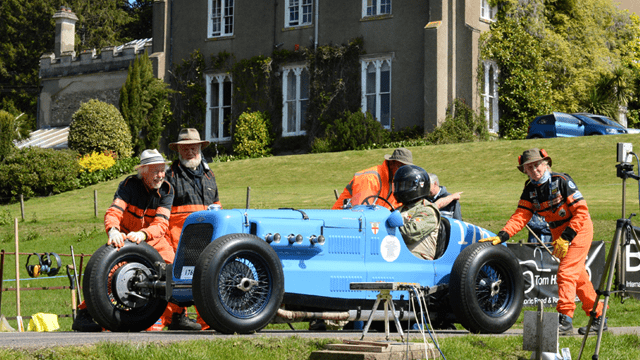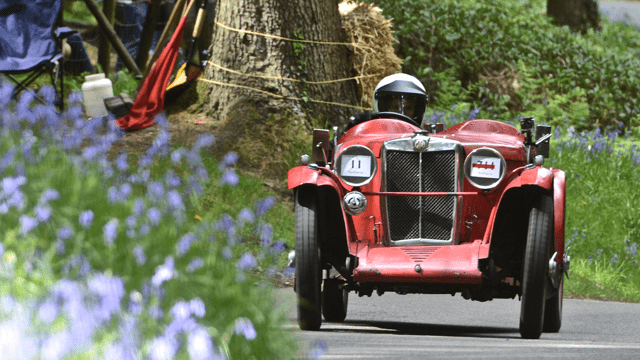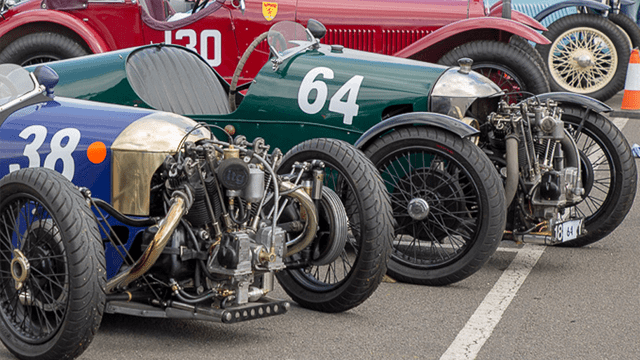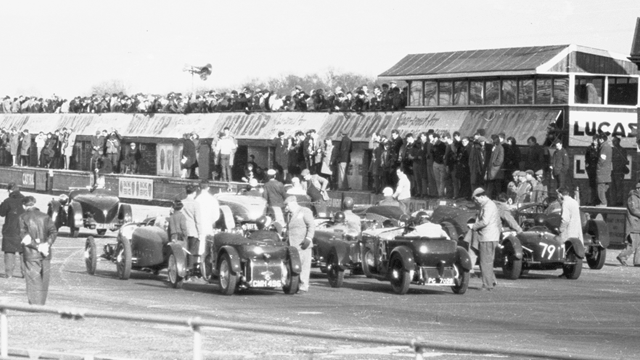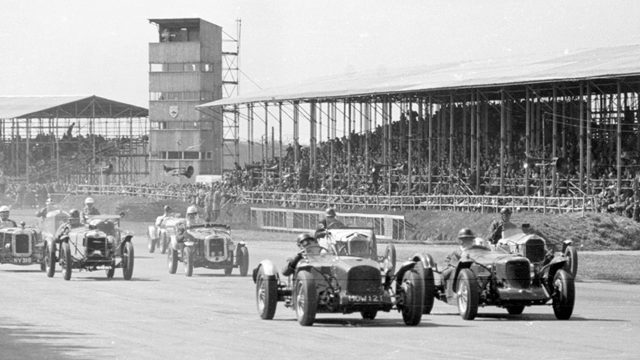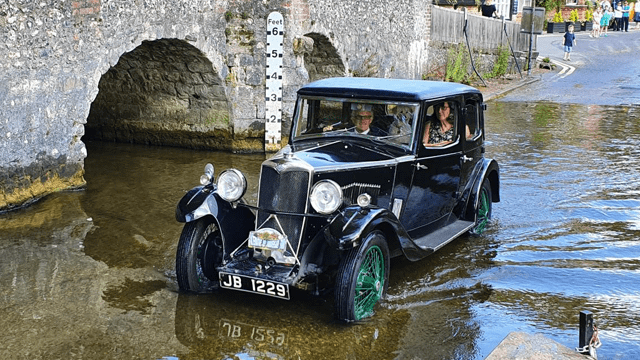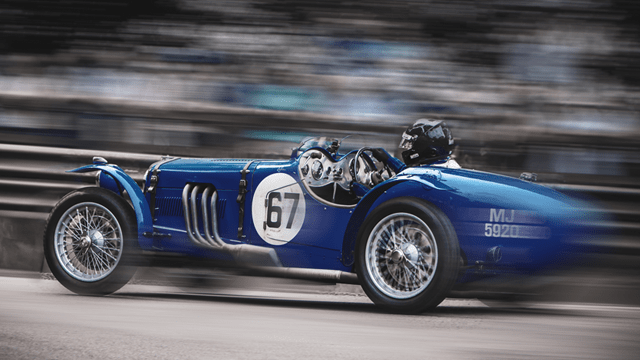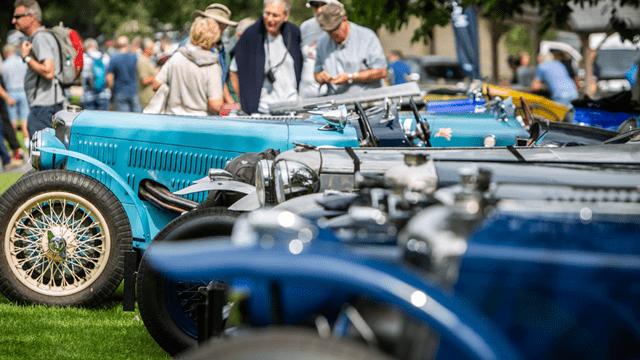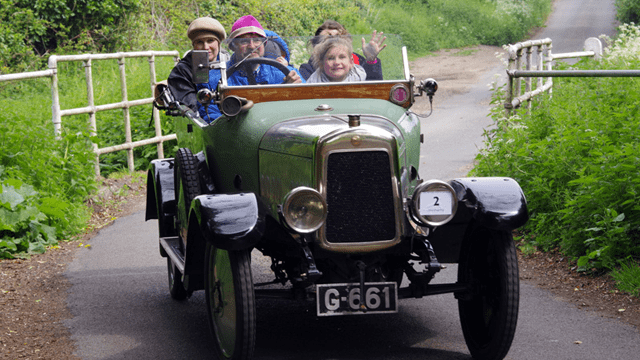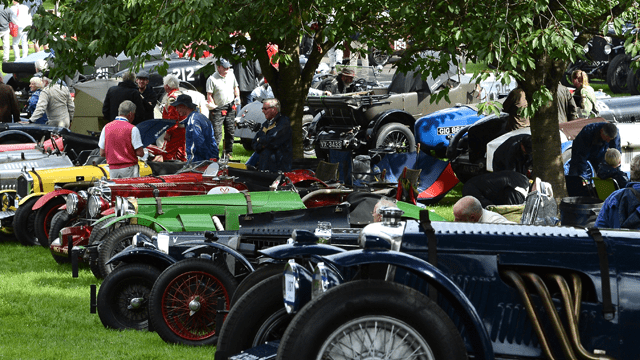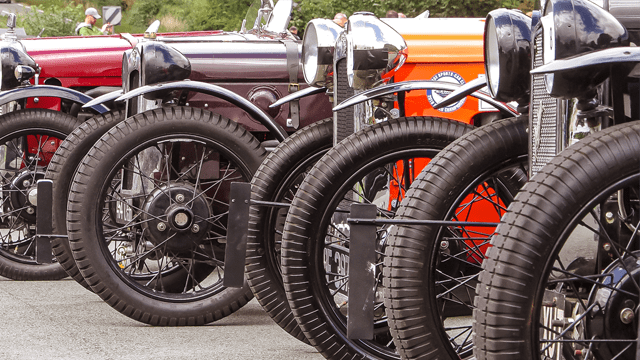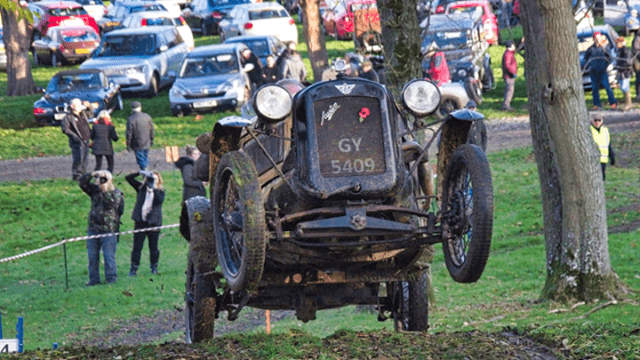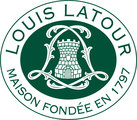Eligibility Notes referring to Austin Sevens
Content being updated by ESC
 All Vintage Austin Sevens are acceptable, as are cars built up to 1934 (i.e. pre-Ruby type), Type EB (Nippy), Type EK (Speedy), Grasshopper and Type EB (65) models.
All Vintage Austin Sevens are acceptable, as are cars built up to 1934 (i.e. pre-Ruby type), Type EB (Nippy), Type EK (Speedy), Grasshopper and Type EB (65) models.
Eligibility Sub-Committee
To Run as Standard
To run as ‘Standard’ the car must be to the original specification for the year and model, specifically:
1. Chassis: This must be the correct chassis type for the date of car, with no modifications except for bolt on chassis extensions on early cars to prevent body sag. See further notes on chassis in the final section of this document.
2. Brakes: These must be unmodified. Cars up to 1930 must have uncoupled brakes. Coupled brakes were fitted to cars dating from 1930 onwards. The width of brake drums and shoes increased from 1” to 1¼” in 1932. Girling brakes are not acceptable on Standard cars.
3. Front axle: Bowed front axles came in for the 1929 season on the “Supersports”, and were then fitted to all production sports models from then on. Most of the earlier racers, including the first Supersports, had straight axles. The later, stronger radius arms with two front mountings were introduced in 1936 and are not acceptable on Standard cars.
4. Rear axle: This must be the correct rear axle for the year and model o Standard: 4.9:1 up to 1932 or 5.25:1 (for PVT) o Sports: 4.9:1 or 4.4:1 o Ulster: 4.9:1 (screw in torque tube type), 5.22:1 or 5.66:1 o Type EK (Speedy): 5.25:1 o Nippy 5.625:1 o Type EB (65): ‘D’ type case with 5.66:1 ratio, later changed to a standard 5.25:1. o Type EB (Nippy): first cars had 5.625:1 ratio in ‘D’ casing which was changed in Oct 1935 to 5.25:1. o 3-piece banjo fitted from 1922 to 1928. o 3-piece banjo with screw-in torque tube and adjustor covers from 1929 to 1930 o 3-piece banjo with bolt-on torque tube and adjustors from 1930-1932. o ‘D’ type casing (2-piece) introduced September 1932.
5. Engine: Sports models must have correct crankcase and not a modified standard one.
6. Cylinder head: This must be correct for the year and model o Casting number “XL 845” used up to 1924. 18mm plugs. o Casting number “XL 1253” used up to 1926. 18mm plugs. o Casting number “1A 38”. 18mm plugs. o Casting number “9E1” made from Chromidium (labelled as such) was fitted to unsupercharged EA models or “9C 7” for supercharged EA models. EB (65) and EK
(Nippy) models used the same cylinder head as EA models, but with higher compression and spark plugs over the valves.
7. Carburettor: The standard carburettor for the year and model must be fitted: o 22mm updraft Zenith (bronze body 22FZ was fitted from 1922 until Jan-May 1929. Die cast 22FZB was introduced thereafter as standard until 1932). o 30mm updraft Solex was fitted to unblown Ulsters and Brooklands. o 28mm sidedraft Cozette was fitted to (Cozette) blown Ulsters. o 30mm downdraft Zenith 30VEI was fitted on the Type EB (65) 1933, EK (Speedy) 1934 and EB (Nippy) 1934 models. It is mounted on an aluminium inlet manifold similar to touring version. o 26mm Zenith sidedraft 26VA was fitted to standard touring models from September 1932 to 1935. o Some Pre-1931 touring models used updraft 22mm Amal carbs.
8. Manifolds: This must be the standard inlet and exhaust manifolds for the year and model. Inlet: aluminium, casting No “XL985” from 1922 to 1932. In September 1932 the inlet manifold was in unit with the exhaust using cast iron. Type EB (65), EB (Nippy) and EK (75) had cast aluminium inlet manifold similar to touring version and a cast iron exhaust manifold.
9. Supercharger: Blown Ulsters must have the correct Cozette No. 4 supercharger (including replicas).
10. Gearbox: The correct gearbox for the year and model must be fitted: o Standard vintage Seven and Gordon England models used the standard 3 speed box with gate change until 1930. o Ulster: standard close ratio 3 speed o PVT: standard appropriate 4 speed (all 4 speed boxes are post vintage) Ball change from September 1932 to 1934. Identified by a large nut at the front of the lid. There were two completely different types of 4-speed box, a double-helical geared “crash” box of 32-33 and then the “Syncro” from 33 on (identifiable by SYN cast into it). They have slightly different intermediate ratios in standard touring form. o Type EB (65): close ratio 4 speed used at first, changed to synchromesh August 1933 (Ch. No. 179403) o Type EB (Nippy): first cars had synchromesh on third and top. Synchromesh added to second gear in July 1934.
11. Bodywork: Cars must have standard bodywork with full wings, windscreen, hood and spare wheel. Ulsters with cycle wings are not ‘Standard’.
12. Wheels & Tyres: The wheels and tyres must be standard for the year and model: o Vintage: 26 x 3 beaded edge (B.E.) to 1925, 3.50 x 19 thereafter. o Cars originally on B.E. may use 3.50 x 19 in place of 26 x 3 BE. o Grasshopper models used 4.50/4.75 x 16” wheels but this varied to suit the competition.
To Run as Modified
To run as ‘Modified’ the car must be similar to the original specification but may differ in the following areas:
1. Chassis: Vintage cars must have the 6’ 3” wheelbase type chassis. o Only local stiffening is allowed. o The position and method of fixing the axles, engine, steering box and gearbox may not be changed. The rake of the steering box may be altered. o The position and height of the radiator may not be changed.
2. Brakes: Hydraulic brakes are allowed. The size of the drums must not be increased from standard. Girling brakes are allowed
3. Front axle: The front axle must be standard or sports type.
4. Rear axle: The rear axle on vintage cars must be the narrow track three-piece axle.
5. Engine: Vintage cars must use an engine of rear-facing or bacon slicer starter type.
6. Cylinder head: Any Austin cylinder head may be used; however, the 1937 head, if used on a Vintage car, must be fitted with 18mm spark plugs. o Replica Ulster heads, including those made in light alloy, are permitted. o Period pre-war special heads are permitted e.g. Watmough-Hewitt, Aluminium Cylinder Head Co., Alta, Ricardo are all allowed. Modern replicas of Watmough, Hewitt and Ricardo have been approved. o The unfinned Cambridge head, being an aluminium copy of the Ulster head is allowed. o Other post 1940 heads e.g. Dante, finned Cambridge, L.R.M., Supaloy etc are not allowed.
7. Carburettors: One or two carburettors may be used but they must be of pre-war design. The only exceptions to this are post 1940 S.U.s or Amals with separate float chambers which may be used but they must be concealed within the bodywork.
8. Manifolds: Exhaust manifolds: These must be within the bodywork unless otherwise provided by or available from the manufacturer in period e.g. Brooklands or Ulster. 9. Mechanical water pumps and electric fans are acceptable as modifications. Electric water pumps are not acceptable in the VSCC.
10. Gearbox: Vintage cars may only use a 3 speed box.
11. Shock absorbers: these must be of the friction type.
12. Bodywork: This must be appropriate to the period and style of the car, as must the wings. Bodies of uncharacteristic lightweight style or construction, or bodies on the incorrect chassis length will be classed as Special.
13. Wheels & Tyres: Cars must use 18”, 19”, 20” or 21” wheels or 26” x 3” BE. Tyres must not be more than 1” different in section to the original (i.e. 4.50 x 19)
To Run as Special
An Austin Seven will be ‘Special’ if any of the following modifications are included:
1. Chassis: PVT cars may use any 6’ 9” chassis including Ruby low chassis (see Note 4 in final section). o Limited boxing and other minor modifications are allowed but if your ideas are extremely ingenious it would be advisable to get approval before going ahead. o Specifically, the 750 Formula practice of building a new chassis around the original side members, or extensions to which suspension can be attached, are unlikely to be approved.
2. Front axle: In addition to the standard axle, a copy of the Works tubular axle may be allowed on replicas of the single seaters. However, specific approval must be sought in each case.
3. Rear axle: PVT cars may use any Austin Seven axle.
4. Engine: PVT cars may use any Austin Seven engine.
5. Manifolds: Modern tuned length exhaust systems are not allowed.
6. Gearbox: PVT cars may use any Austin Seven gearbox. Vintage Specials must use a 3 speed gearbox.
7. Shock absorbers: Any number or kind of pre 1941 shock absorber is allowed. Telescopic shock absorbers are not allowed.
8. Bodywork: This must be appropriate to the period and style of the car, as must the wings. 9. Wheels & Tyres: Further to the sizes permitted for Standard and Modified cars, Specials may also use 400mm, 16” or 17” wheels. Post 1930 racing cars may use wheels of 15” diameter (maximum rim width 4”) with crossply tyres of no more than 4.50” width. PVT Austin Seven racing cars on 15” wheels will be classified as Specials and should run stripped of road equipment and run as racing cars.
Additional Notes
In general, vehicles constructed on the 6’ 9” wheelbase chassis will be Specials.
‘Ulster’ replicas built on the 6’ 9” wheelbase chassis will be Specials.
Post war 750 Formula or trials technology and body styles are not acceptable, nor are post war specials with poor quality or ‘economy’ bodywork.
Remanufactured components in non-original materials are, in general, not accepted.
Specific notes on chassis
1. All chassis built in the vintage period (pre 31 December 1930) are eligible as ‘Vintage’.
2. Short (6’-3”) chassis built from 1 January 1931 to the introduction of the 6’-9” chassis in October 1931 are acceptable as PVT.
3. Long (6’-9”) ‘High Frame’ chassis from October 1931 to the introduction of the Ruby Type ‘Low frame chassis in July 1934 are eligible as PVT.
4. Long (6’-9”) ‘Low Frame’ Ruby type chassis are eligible as PVT but are not to be counted as one of the five major components under the ‘3 out of 5’ system except where they are used to construct an accurate Grasshopper or late Nippy replica.
5. Long (6’-9”) ‘High Frame’ chassis constructed after July 1934 are eligible as PVT but, as their chassis numbers will be within the run of Ruby Type numbers, it will be the responsibility of the Member to prove that his chassis is of this type and not a Ruby type that has been modified.
Approximate Dates and Chassis Numbers (not definitive - to be used as a guide only)
Type 1 – 1923 to December 1930. To chassis number 126380.
Type 2 – January 1931 to September 1931. 126381 to 142000.
Type 3 – October 1931 to June 1934. 142001 to 198595 (but see Type 5 below).
Type 4 – July 1934 to March 1939. 198596 to 291000.
Type 5 – July 1934 to March/April 1937. Random numbers within the range given in Type 4 above.


